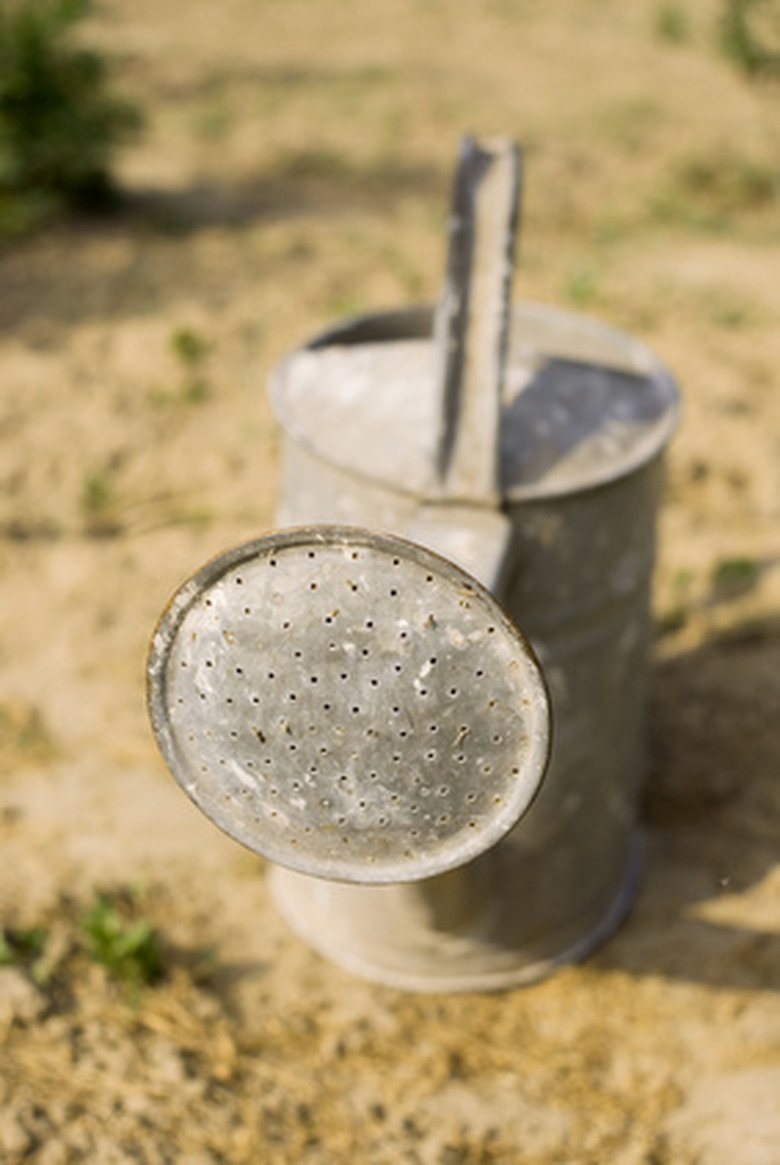How To Use Whey For Watering Plants
Farmers and gardeners have used whey to water their plants for many years, with healthier plants as evidence that whey is beneficial for their plants. Whey contains nitrogen, phosphorus, potassium, magnesium and other minerals that are essential to plant growth. However, when watering your plants with whey, moderation is key. Small amounts of whey will fertilize your plants. But excessive amounts of whey in the soil can actually decrease the amount of nutrients available to your plant.
Step 1
Place a rain gauge near the plant(s) that you intend to water. While a small amount of whey is beneficial to plants, too much whey is detrimental. The rain gauges will help you determine exactly how much whey you are giving your plants. If you cannot find a rain gauge, simply tape a ruler to the side of any clear, cylindrical container.
- Farmers and gardeners have used whey to water their plants for many years, with healthier plants as evidence that whey is beneficial for their plants.
- The rain gauges will help you determine exactly how much whey you are giving your plants.
Step 2
Fill your watering can with a solution that is one part whey and one part water. Ideally, use a watering can with a spray head so that the whey is evenly distributed.
Step 3
Give each plant 1 inch of the whey water solution (stop when the water gauge is filled with 1 inch of water). Avoid wetting the plant's foliage if possible. Instead, spread it evenly around the soil around the plant, taking care to cover all of its roots.
Step 4
Repeat steps 1 to 3 weekly.
Whey For Watering Plants
Rather than throw out leftover whey from making cheese, re-purpose it to water and fertilize plants. Plants will still need regular water, but watering with whey is a good supplement to fertilizers and it can improve soil conditions for plants that prefer a low pH. The exact nutrient content of whey varies, but 100 gallons of typical whey contains 1.22 pounds nitrogen (N), 0.40 pounds phosphorus (P), 1.46 pounds potassium (K), 0.29 pounds calcium, 0.05 pounds magnesium, 0.42 pounds sodium and 1.00 pound chlorine. Application rates are determined by the amount of nitrogen. An all-purpose fertilizer with an N-P-K ratio of 24-8-16 is diluted at a rate of 1 tablespoon per 1 gallon of water. This supplies 0.1 ounces of nitrogen, 0.03 ounces of phosphorus and 0.06 ounces of potassium per application. Because whey is acidic, with a pH between 4.0 and 6.1, it can be used to correct pH in soils too alkaline for specific plants.
- Fill your watering can with a solution that is one part whey and one part water.
- Because whey is acidic, with a pH between 4.0 and 6.1, it can be used to correct pH in soils too alkaline for specific plants.
Things Needed
- Rain gauge
- Watering can with spray nozzle
Tip
When whey is added to soils with a pH between 5 and 5.5, it may increase the soil acidity enough to harm the plant or stunt its growth. Alfalfa tolerates whey, but it is not beneficial to this plant.
References
- University of Wisconsin: Whey as a Source of Plant Nutrients and its Effect in the Soil
- Wisconsin Department of Agriculture: Uses of Whey in the Farmstead Setting
- Restoration and Reclamation Review: Soil Degradation And The Use Of Agricultural And Organic Industrial By Products As Soil Amendments
- Colorado Master Gardener Program: Plant Nutrition
- Colorado Master Gardener Program: Managing Soil Tilth – Texture, Structure, and Pore Space
- University of Vermont Extension: pH For The Garden
- Fine Gardening: Genus – Azalea
